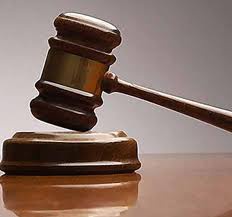
Nana Anku Dododja Didieye III, an Odikro of Abomasarefo, a village in the Eastern Region, is before a Koforidua High Court with the charge of forging a ‘colonial’ document.
The said colonial document, titled “Report on Enquiry into Akwamus and Kwahus Land Dispute, 1845” was said to have been forged by the accused person and that it was not in the National Archives since 1845 as was being indicated.
After some investigations, witnesses are being brought on board by the state prosecutor, Fred Ndawura, to testify on the authenticity of the said ‘colonial’ document.
Mr Confidence Kodzo Gadzekpo, a former Chief Archivist at the then National Archives, appeared as a witness at the Commercial Court in Koforidua presided over by Justice Henry A. Kwofie.
The witness disclosed that while in office in 1990, Nana Anku Dododja Didieye III, Odikro of Abomasarefo, a village in the Eastern Region, brought the ‘colonial’ document to him for storage in the archives.
He said knowing that the document was not an ancient but a private document, he classified it as Special Collections (SC) which meant “not a colonial or government record” and therefore stored it as such in the archives and gave it a certificate of authentication.
Mr Gadzekpo indicated that while at home on pension, his successor called him on phone inviting him to the office to address a problem which he got there only to see the presence of some police personnel wanting to know the authenticity of the document.
According to him, he informed the police that the document was not a colonial record but rather it was brought by the accused person, Nana Didieye III. Mr Gadzekpo said two weeks after meeting the police, Nana Didieye came to his residence and threatened him (Gadzekpo) that they would both be imprisoned if he did not change the statement he made to save himself.
“So he (Nana Didieye III) took me to a friend of his and they convinced me to come to the court to deny what I had earlier told the police,” he added.
Gadzekpo told the court that after changing his earlier statement, he felt guilty and regretted his actions and so approached a lawyer and made a statutory declaration to annul the latter statement he made.
The court therefore adjourned sitting to reconvene after the Easter break.
Allegation has it that between 1989 and 1990, Nana Didieye visited the National Archives several times obtaining certain historical documents of the Gold Coast from which he compiled the said ‘colonial’ document.
It was alleged that he later presented it to the National Archives claiming it was an ancient document prepared by a certain Major Cochan of the Gold Coast regiment.
According to him, he found that ‘colonial’ document in a horn of an animal at a shrine in Abomasarefo, which he thought would be of interest to the archives.
A portion of the document is alleged to contain a receipt indicating that Abomasarefo and its environs were bought by the accused great-grandfather, Kwaku Dedeayie, alias ‘Bareyo’ from the Akwamus in 1845 for 250 pounds sterling.
The allegation continued that the accused person, Nana Didieye III, later went back to the archives and obtained an authenticated copy of the document he had presented and petitioned the Kwahu Traditional Council in 1991 claiming the Abomasarefo land from the Bukuruwa stool.
With the authenticated copy of the document as evidence, Nana Didieye won favour from the Traditional Council, obtained favourable judgment at the Koforidua High Court afterwards and again emerged victorious at the court of appeal with regard to the same document.
However, being sure as owners of the lands, the Bukuruwa stool felt strongly that the accused person’s claim was strange and fraudulent and therefore mandated one Kwabena Siaw, the complainant, to undertake an independent investigation to ascertain the genuineness of the said 1845 report.
Kwabena siaw’s investigations seem to be revealing that the document might have been forged and has since reported the case to the police for further investigations.
The document is said to have been tested by the Police Forensic Laboratory but the result regarding its authenticity was yet to be presented to the court.